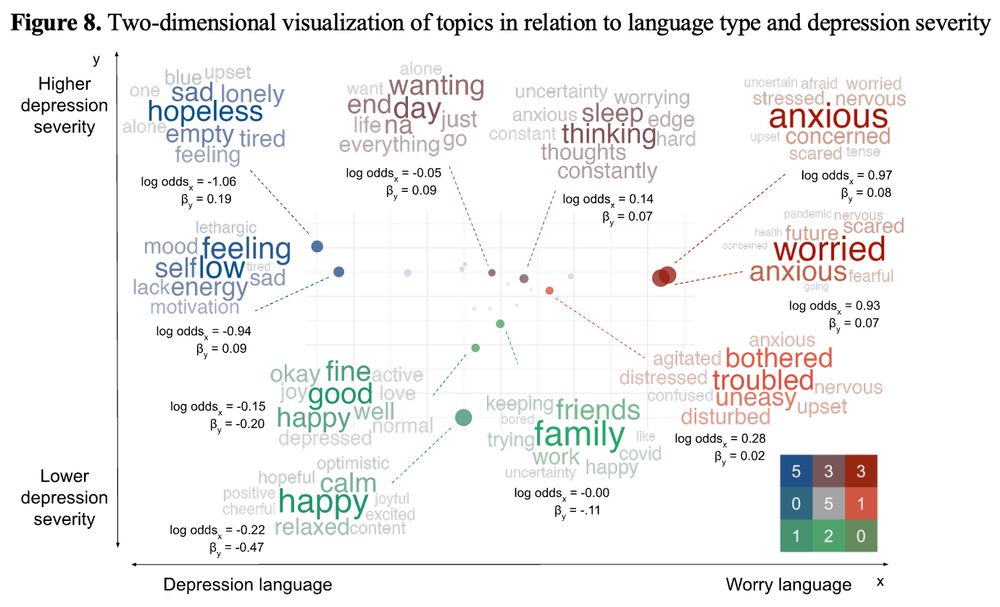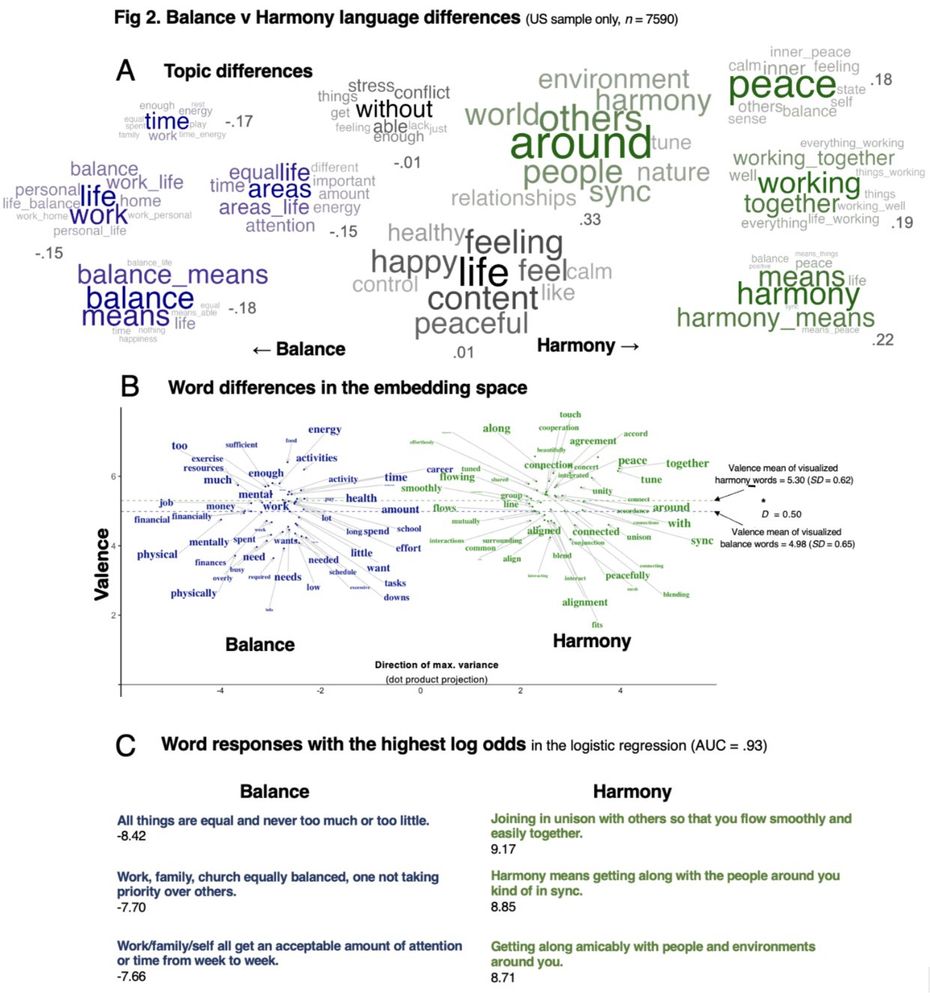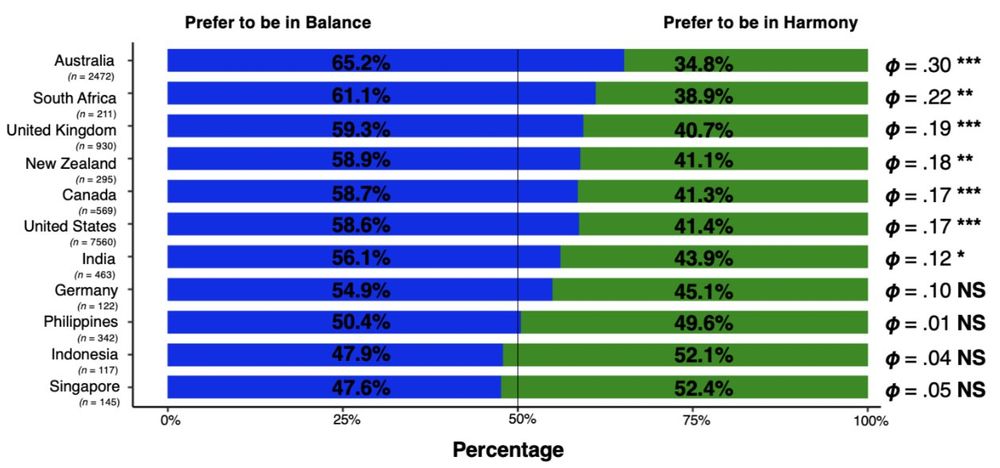
1/5 Did you ever wish to make a visualization of language data? 🤔
We made an R-based tutorial for social scientists on how to turn language data into visual insights ✅
Preprint: doi.org/10.31234/osf...
@agnilsson.bsky.social
Using Natural Language Processing in Positive Psychology due to an unconscious desire of figuring out why my life is so unimaginably balanced, satisfying and harmonious

1/5 Did you ever wish to make a visualization of language data? 🤔
We made an R-based tutorial for social scientists on how to turn language data into visual insights ✅
Preprint: doi.org/10.31234/osf...
The LEADING reporting guideline is now published in Comprehensive Psychiatry 🥳
See www.sciencedirect.com/science/arti...
Or read the previous summary 👇
We pushed up the accuracy even further with human-centered embeddings from Nikita Soni who also led the team. Much much fun! 😃
05.05.2025 18:29 — 👍 1 🔁 0 💬 0 📌 0
In a computer science task of predicting well-being from Reddit posts, we used psychological language features such as mental health, implicit motives and resilience and were more accurate than half of all teams.
Accuracy with explainability! #CLPsych2025
aclanthology.org/2025.clpsych...
And a big thanks to many others who provided great comments. Not least Mr @ryanboyd.io 🙏🫶
11.04.2025 08:58 — 👍 2 🔁 0 💬 0 📌 0I led this research with a brilliant team, with the expert Malte Runge in the forefront, young genius Carl-Viggo together with @oscarkjell.bsky.social creating the easy implementation of these models in R and Adithya Ganesan and Nikita Soni representing the computer science department 🙏🙏🙏
11.04.2025 08:57 — 👍 2 🔁 0 💬 1 📌 07/7 This coding automation with fast, high-quality codings can enable a renaissance of implicit motive codings, a field dating back to psychology legends Henry Murray and Gordon Allport in the 1930s. 💤->🔔->🏋️♀️
11.04.2025 08:55 — 👍 1 🔁 0 💬 1 📌 0
6/7 In the R package text (www.r-text.org), you can easily apply these models with a single command (after you installed text), for free, without sharing data with any third party #rstats ##rtext👇👇👇
11.04.2025 08:54 — 👍 1 🔁 0 💬 1 📌 0
5/7 We let three rested experts recode sentences where our models strongly disagreed with the original coders. In 85% of the cases, the new coders agreed with the models, indicating that the models are more accurate than humans. 💻👈
11.04.2025 08:54 — 👍 1 🔁 0 💬 1 📌 0
4/7 YES, our models, trained with data from German people 2010-2020, generalized to US data FROM 1949, with completely different picture cues and gender distributions. 😱😎
11.04.2025 08:53 — 👍 1 🔁 0 💬 1 📌 0
3/7 Using language models and machine learning, we created automated implicit motive codings that agreed stronger with the average expert coder than how expert coders generally agree with each other in three different holdout sets 🎯
11.04.2025 08:53 — 👍 1 🔁 0 💬 1 📌 02/7 Implicit motives are subconscious needs that have been studied for a century but are very resource-intensive to assess. A 100-participant study takes 50 hours of brain-focused work to code stories written by people. 🧠💰
Now it takes <10 minutes using no brain power! ⚡️

🎺 Publication in JPSP 🎺
1/7 We automated the coding procedure of the implicit motives of power, achievement and affiliation with at least as high accuracy as human coders while being 99% faster! 🎯⚡️
Article: psycnet.apa.org/fulltext/202...
#personality
#AI
#NLProc
@apajournals.bsky.social
Very fun to work with the fantastic harmony gurus
Tim Lomas, @oscarkjell.bsky.social, Ryan Niemiec, James Pawelski, Noah Padgett and Tyler VanderWeele on this paper 🙌

8/8
Bottom line✅:
Balance = life’s parts working together ⚖️
Harmony = quality of relationships 🫂
They’re more distinct than previously assumed.
www.tandfonline.com/doi/full/10....
7/8
The model agrees 🤖:
Using machine learning, we classified balance vs. harmony definitions with an AUC of 0.93.
That’s very high 🚀—meaning the concepts are easy to tell apart.

6/8
How people define them:
Harmony = relationships—mostly social 👥, but also with nature 🌳 and the world 🌍.
Balance = life’s big picture—work 💼, family 👨👩👧👦, self , etc.
Distinct patterns in people’s words. 🔍
pbs.twimg.com/media/GjbJwQ...

5/8
Key finding #2:
Where you live matters 🗺️
Preference for balance = stronger in sparsely populated countries (e.g., Australia 🇦🇺)
Preference for harmony = stronger in densely populated countries (e.g., Singapore 🇸🇬)
More people around you? Harmony matters more. 🫂
pbs.twimg.com/media/GjbI5Y...

4/8
Key finding #1:
People define harmony more positively than balance. (based on predicted valence in the definitions!)
BUT—more people prefer to be in balance (58.3%) 🤯than in harmony.
Positivity ≠ preference.
pbs.twimg.com/media/GjbIzq...
3/8
We asked:
Two open-ended questions:
“What does balance mean to you?”
“What does harmony mean to you?”
One forced-choice:
“Would you rather be in balance or in harmony?”
15,275 people. 154 nations. Big data for big questions. 🌍📊
2/8
Why does this matter? 🤔
Life satisfaction & happiness dominate well-being research but are critiqued as:
Western-focused 🌍
Money-driven 💰
Hedonic 😄
Enter balance & harmony—Eastern-rooted, purpose-related, socially focused.
But are they the same thing?

1/8
Balance ⚖️ vs. Harmony ☯️: Two emerging well-being constructs often sloppily used interchangeably.
But they’re distinct.
Balance = broad life domains ⚖️
Harmony = relationships🧘
We asked 15,275 people across 154 nations to show it.
www.tandfonline.com/doi/full/10....